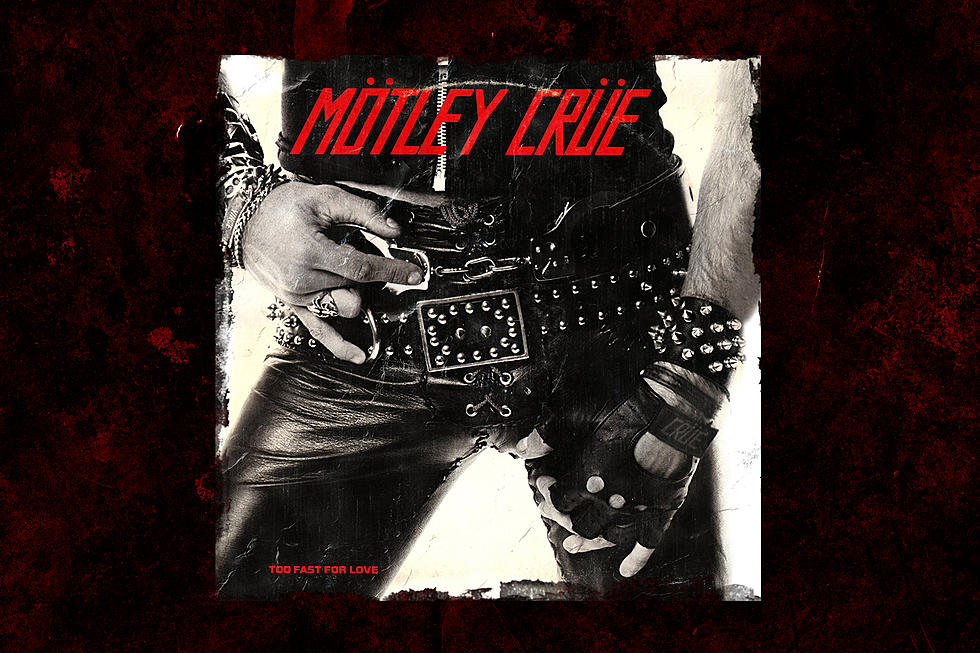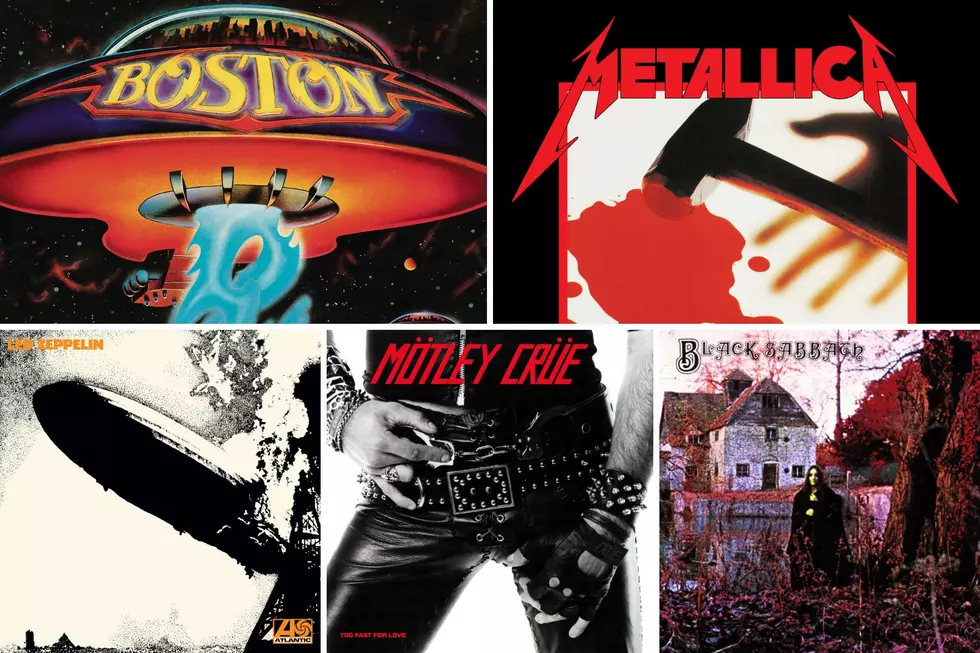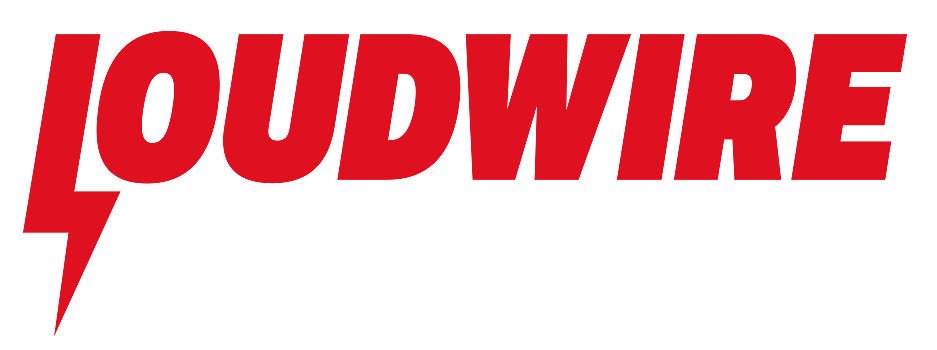
42 Years Ago: Motley Crue Self-Release Their Debut Album ‘Too Fast For Love’
Motley Crue made themselves known with their debut record, Too Fast for Love, less than one year after the band's conception. With 900 copies pressed, the self-produced album was released on Nov. 10, 1981, via the band's own Leathur Records and proudly boasted 10 tracks of raw aggression, attitude and sleaze, which matched the hype of the band's already growing reputation.
As a must-see act in clubs, Motley Crue carried over their badass demeanor seen onstage to after-parties at the band's house, which was hardly furnished and saw the group living under harsh conditions. While they may have not had much money for food or anything else, booze and drugs were never in short supply. Already living and loving the rock star life, Crue set themselves up for one of the most legendary careers with Too Fast For Love.
The album had mostly been written before the band even fully came to fruition. Nikki Sixx was previously in a group called London (where seemingly every member went on to find success after leaving) and he was writing music on his own, but felt it wasn't right for his current group. He kept the songs in his back pocket and had them ready to go after forming his new band.
Rounding out the Motley Crue lineup was drummer Tommy Lee, guitarist Mick Mars and singer Vince Neil. However, Neil almost missed his chance. The band originally planned to try him for the vacant spot, but the singer had missed the audition, forcing the Crue to opt for a frontman named O'Dean. When it didn't pan out, Neil was given a call back and made sure he showed up this time. Nikki Sixx spoke about Neil's audition in 1982 on a local radio program, saying, "It was just magic, his voice fit perfect with our sound and it just came together."
Hitting the studio, Neil had only been in the band for a couple days and had to read off of a lyric sheet while laying down his tracks on the band's Leathur demo. With the urging of band manager Alan Coffman, the quartet decided to release their first album entirely on their own since label interest had not yet mounted, partially because of the band's image, which can be seen on the album's cover, an homage to the Rolling Stones artwork for their album Sticky Fingers.
Coffman helped finance the record in addition to finding equipment and gear for the guys to use. (He later ran off with the advance for the band's second album, inspiring the song "Bastard.") The result was 38 minutes and and 49 seconds of pure energy by a band with no stylistic limitations or pressures from a label. The unadulterated process spawned seminal cuts like "Live Wire," "Take Me to the Top" and the title track, along with the moody "Merry-Go-Round."
Motley Crue, "Live Wire" Music Video
When asked about the subject matter of "Merry-Go-Round," Sixx revealed the inspiration behind the song, saying, “When I was living in Seattle where I was raised there was a guy who was about 22-23 years old and had about four kids and had all these pressures — it was too much on his mind."
Explaining more, he added, "There was an actual merry-go-round by right where the houses and little apartment buildings were. And one day he just wound up sitting out there and he had lost his mind and they took him away in a straightjacket. He regressed to being a little kid; he was out there playing on the merry-go-round and he just lost it — too many pressures.”
Producer Michael Wagener mixed the record in four days, having previously worked with Mick Mars. After the band signed with Elektra in 1982, the album saw a worldwide release with a remixed version and different tracklisting that struck "Stick to Your Guns" and the original opening of "Too Fast For Love."
Motley Crue, "Too Fast For Love"
The only Elektra pressing with the original Leathur Records mix were the first copies in Canada, which did not have any omissions like the later releases, since the band was readying a tour of the country and the label wanted copies of the album available in stores to coincide with the trek.
Prior to label support, the band had been booking their own shows and doing all of their own promotion, renting out 350-600 capacity venues and packing places from Northern California to Nevada. The spandex, leather and makeup had been getting the group a lot of attention in addition to the music.
When asked if she felt the band was tapping into something special, then consultant manager Vicky Hamilton reflected, "Oh totally. When Motley busted out it was all punk rock and European new wave stuff like Duran Duran or Psychedelic Furs. So they just stood out with their duct tape, spandex and hair. Nikki lit himself on fire and just everything about them was like “What is THIS???!!"
Motley Crue, "Take Me to the Top" — Live in 1981
This statement echoed the thoughts of Sixx at the time when he talked about Motley Crue's image with local radio and foreshadowed what would become hair metal. The bassist said, “A lot of people in L.A. — it’s picking up like in England when the punk bands started, the Sex Pistols and stuff, everyone went to that extreme. I’m wondering what’s going to happen in the future with us because it’s starting to happen just in L.A.; what’s gonna happen when the album gets distributed internationally if it’ll pick up to that extreme?”
Nikki Sixx got his answer in the coming years. Too Fast for Love was certified platinum by the RIAA in 1986, one of five of the band's albums to eclipse that mark. The glam metal image that Motley Crue adopted so early went on to see global dominance in the mid to late '80s and helped bring fame to countless other bands who would lean heavily on Crue's style.
Motley Crue Albums Ranked
More From Loudwire









